Vibrant lantern-lit venues rekindle interest in centuries-old traditions
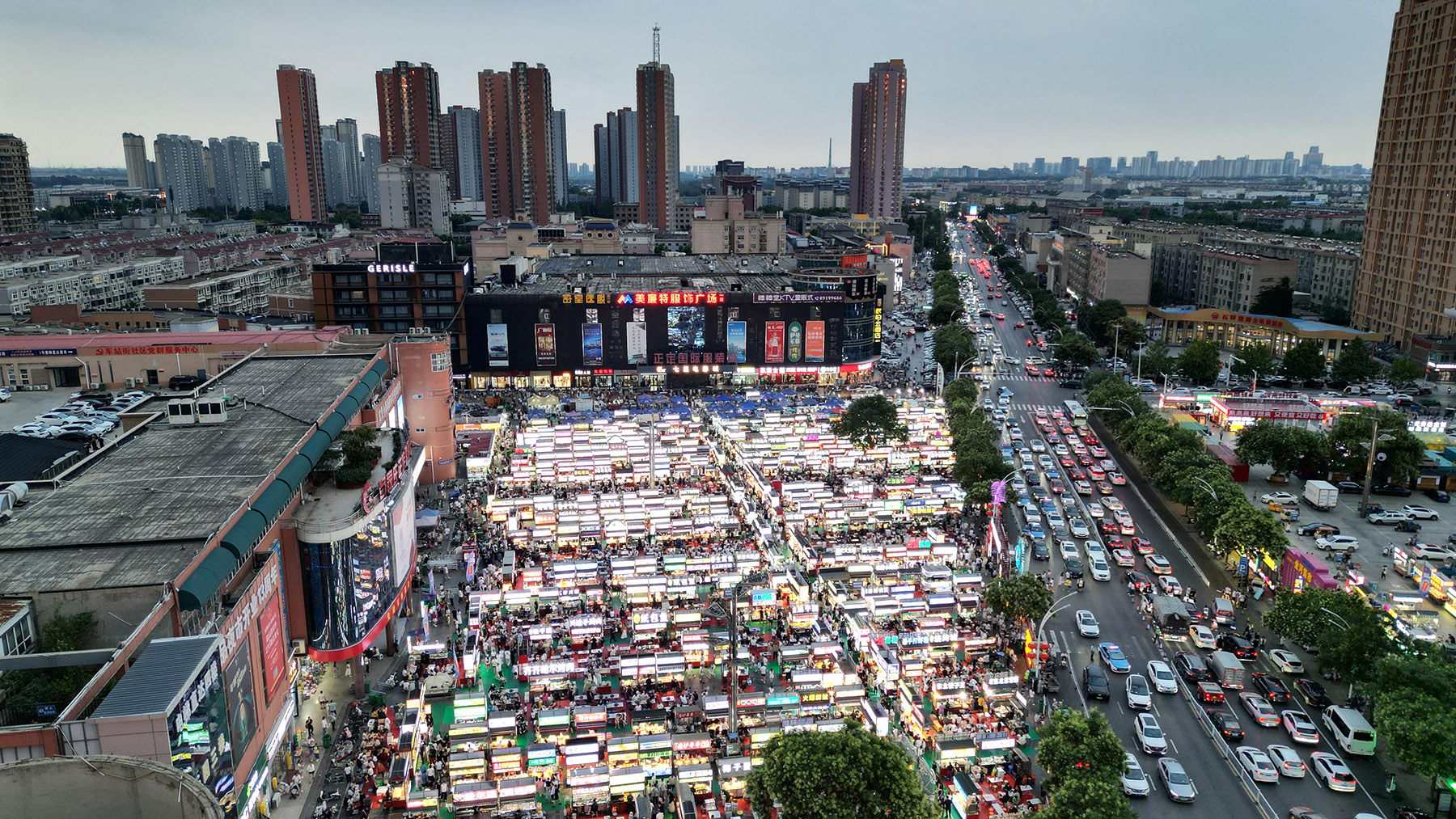
As dusk falls over the ancient county of Zhengding in Hebei province, a remarkable transformation begins — a vast parking lot near the train station empties, making way for hundreds of brightly lit food carts.
Within hours, the Zhengding Small Commodities Night Market erupts into life — a symphony of sizzling pans, shouting vendors, and the chatter of thousands of eager visitors.
This nightly scene pulses with yanhuoqi — literally "smoke, fire and steam" — providing a lively, lantern-lit atmosphere fundamental to Chinese night markets.
Remarkably, Zhengding's connection to this vibrant nightlife stretches back more than 10 centuries.
During the Northern Song Dynasty (960-1127), as China gradually abolished curfews, Zhengding (then Zhending) emerged as a regional administrative center and one of the pioneers of nighttime commerce.
"Zhengding is a place with a night economy that emerged from over 1,000 years ago," said Liang Yong, a researcher at the Hebei Provincial Institute of Culture and History.
According to Liang, the county's strategic importance and strong commercial base fostered early forms of night markets.
Later, during the Mongol Empire and the Yuan Dynasty (1271-1368), it became the birthplace of zaju, Chinese variety dramas, further boosting nighttime gatherings.
Historical records, like those by the 14th-century scholar Naxin, describing lantern-lit crowds near Yanghe Tower, filled with theaters and wealthy traders, paint a picture of enduring nocturnal energy.
Naxin, also known by his ethnic name Geluolu Naixian, wrote Heshuo Fanggu Ji — a record of his visits to ancient sites around the Yellow River basin and various northern regions. Compiled during his 14th-century travels, it documented the vibrant fusion of entertainment, dining, and international commerce around the tower.
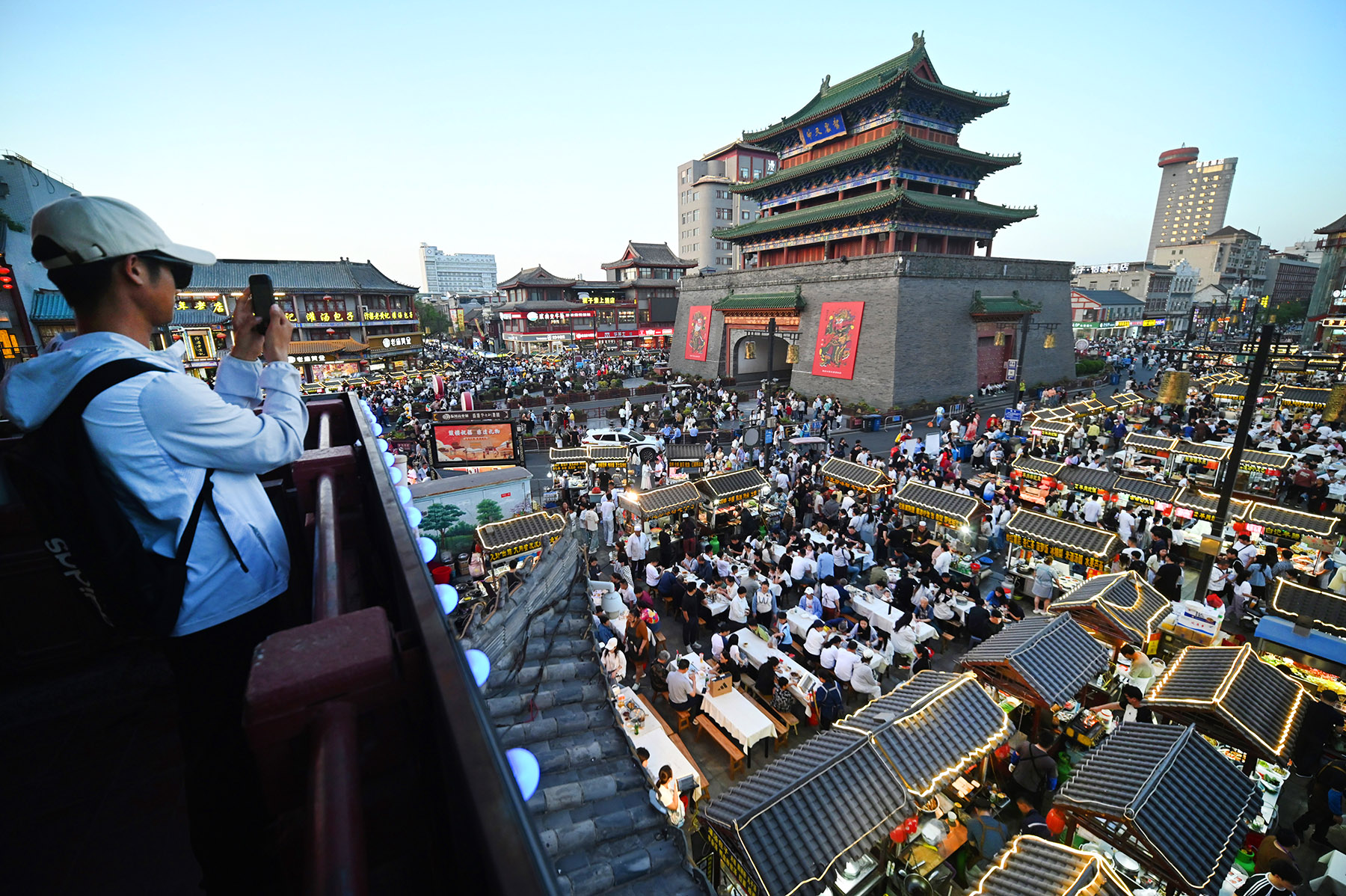
In 2012, Li Zhangchao, one of the founders of the greater Zhengding Small Commodities Market, put forward an initiative encouraging mall tenants inside the market complex to set up evening stalls in a vast adjacent street and parking lot.
"Back then, Zhengding was dark by 9 pm," said Li, now 72, who recalled that back then he couldn't find anything to eat or buy at night.
However, his initiative soon got off the ground.
"The location was strategic — an urban-rural fringe bordering villages like Sanjiao and Yong'an," said Liu Guangdi, chairman of the Zhengding Small Commodities City Group, which manages the market and the nearby wholesale-retail complex.
As rural residents returned home from city jobs in the evenings, dense pedestrian flows created strong demand for snacks and small goods, she added.
According to Liu, the market grew naturally. Streetlights were installed, hours were extended, and fees were initially waived to attract vendors. During urban upgrades of the county, authorities also channeled street vendors into the designated market zone.
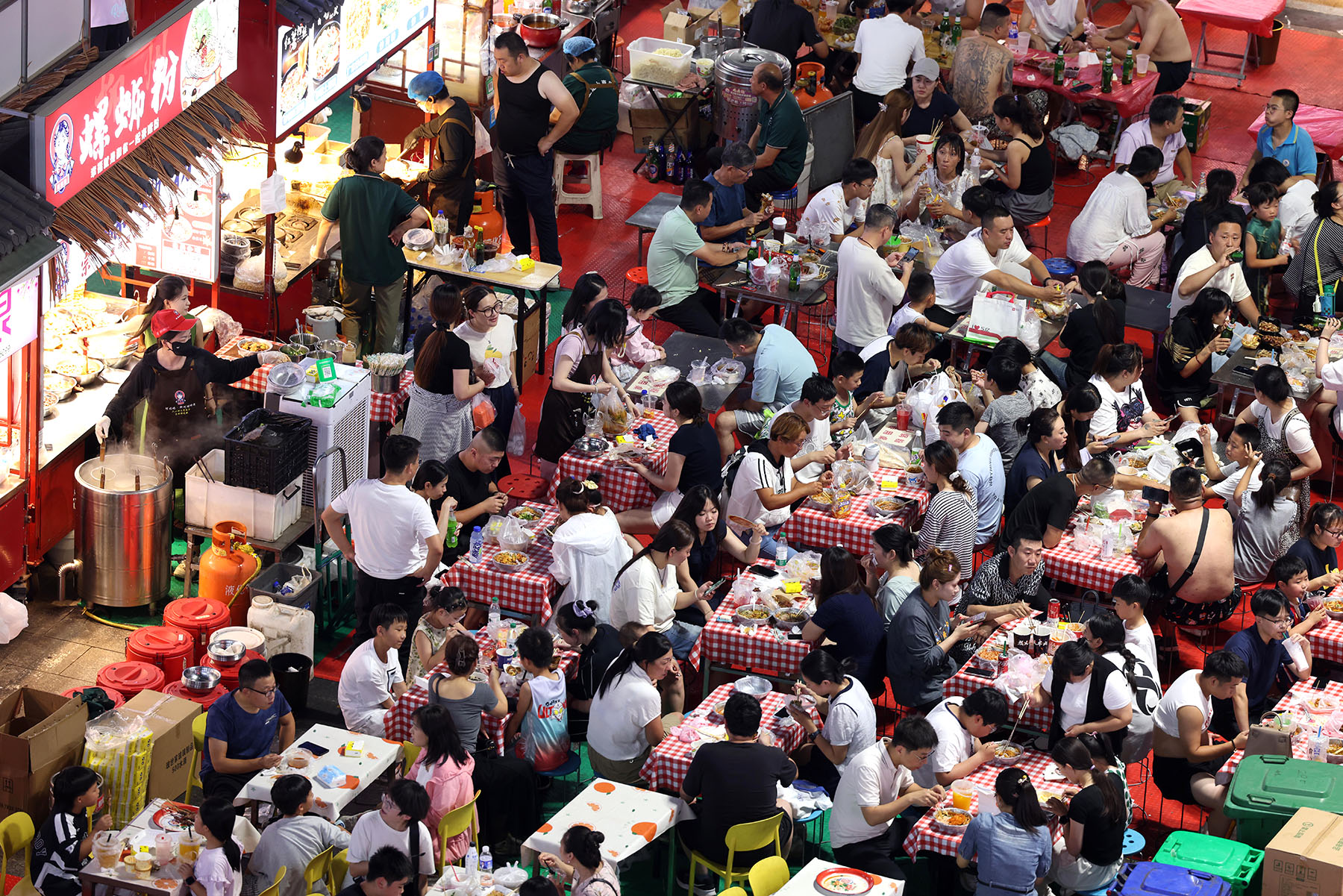
Tasting success
Today, the market is a popular landmark, covering 10,000 square meters and with over 600 stalls.
It attracts 10,000 to 30,000 visitors nightly, and generated an estimated 400 million yuan ($55.8 million) in annual revenue last year. It has created 2,500 jobs, particularly for those without higher education, said Liu.
At its heart, are entrepreneurs like 39-year-old Lu Yang whose journey is an example of the market's ability to change people's lives.
Arriving in 2019, after his parents' street vending business failed in nearby Shijiazhuang, Lu tried a number of food ventures before spotting a gap in the night market — hearty, savory staples for northern palates.
He then traveled to Wuhan, Hubei province, to master how to make reganmian, or hot dry noodles. "People in northern China crave saltiness, rather than sweetness," Lu said.
After two years of trial and error, he abandoned sugar and bean sprouts, and chose nine toppings favored by customers in Zhengding, including pickled beans, peanuts, chili oil, and scallions. "It was a painful process," Lu said. "Every failed attempt meant wasted ingredients."
But his persistence paid off.
A breakthrough came courtesy of his smartphone. He started filming his steaming kitchen, along with snaking lines and satisfied customers, and posted clips on social media platforms like Douyin and Xiaohongshu, or RedNote.

His number of followers soared to 100,000, landing his stall on local "must-eat" lists. His sales of reganmian exploded to 700 to 800 bowls midweek and over 1,000 on weekends.
Lu now employs seven workers and rents four adjacent stalls just to keep up with demand. "During the peak last April, I survived on three hours' sleep for 20 days," he recalled, wiping sweat from his brow as it neared midnight, his shirt dusted with flour.
He proudly said that while nearly 20 stalls sold hot dry noodles during last year's peak, now only a few "winners" like him are left.
A social media post went viral in April 2024, attracting over 100,000 daily visitors at one point. The number of visitors reached 3 million last year, according to Liu, from the market management group.
"It's impressively large and lively, with affordable food from across China, though I'd like to see more distinctive Zhengding snacks among the offerings," said Zhang Long, a Beijing resident who traveled to the county after seeing stories about it online.
He visited the market with several friends. "When we went in, we were all very hungry. When we came out, we felt like we were about to burst. There was so much delicious food. We couldn't even eat it all," Zhang said.
READ MORE: Fresh signs of steady rebound seen
Wang Li, 42, a local middle school Chinese teacher and mother of two, said her family's weekly ritual is to cycle 3 kilometers to the night market to eat.
"It has become a must-go recreational place for us locals," she said. "Seeing our county's humble market trend nationally feels incredible. It proves just how expansive and delicious our offerings are," she said proudly.
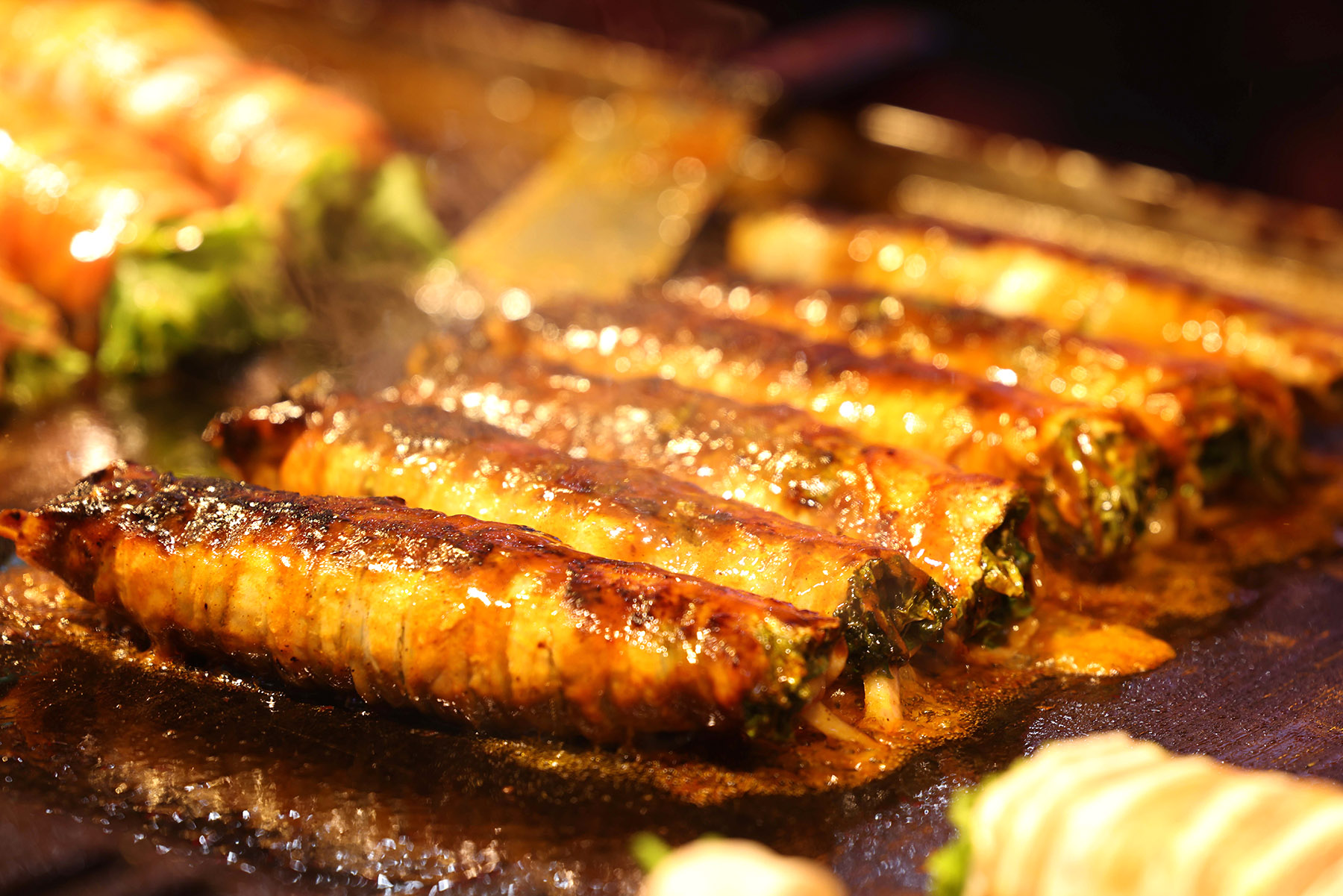
Ensuring quality
The numerous visitors to the night market brought not only locals' pride, and fame and stronger sales for the market, but also significant challenges, Liu said.
At the time, visitors complained about traffic gridlock, excess garbage, and spotty mobile signals hindering payments.
"Although our night market is quite large, its capacity is limited. Therefore, when there was a sudden surge in visitors last year, it led to some negative experiences, such as having to queue up at every food stall," Liu said, adding they immediately sought to solve the issues with strong support from the local government.
Among many measures, network providers upgraded base stations and deployed 5G micro-stations. The market added 50 cleaners and a 6-metric-ton mobile garbage compactor. Portable toilets were installed to address long lines for the bathroom.
Cao Ming, from the Zhengding County Urban Management Bureau, said their multipronged approach included strict food hygiene protocols, enhanced sanitation, dedicated patrols for order and safety, and a "specialized cylinder" system for gas safety. "We practice precision management with friendly service, so visitors can have a good experience here in Zhengding," Cao said.
Zhao Yanling, 53, sells handmade dumplings. He said quality is non-negotiable when it comes to customers' satisfaction. "We use only fresh pork slaughtered the same day, not frozen, and fresh vegetables — no shortcuts. Customers trust us," he said.
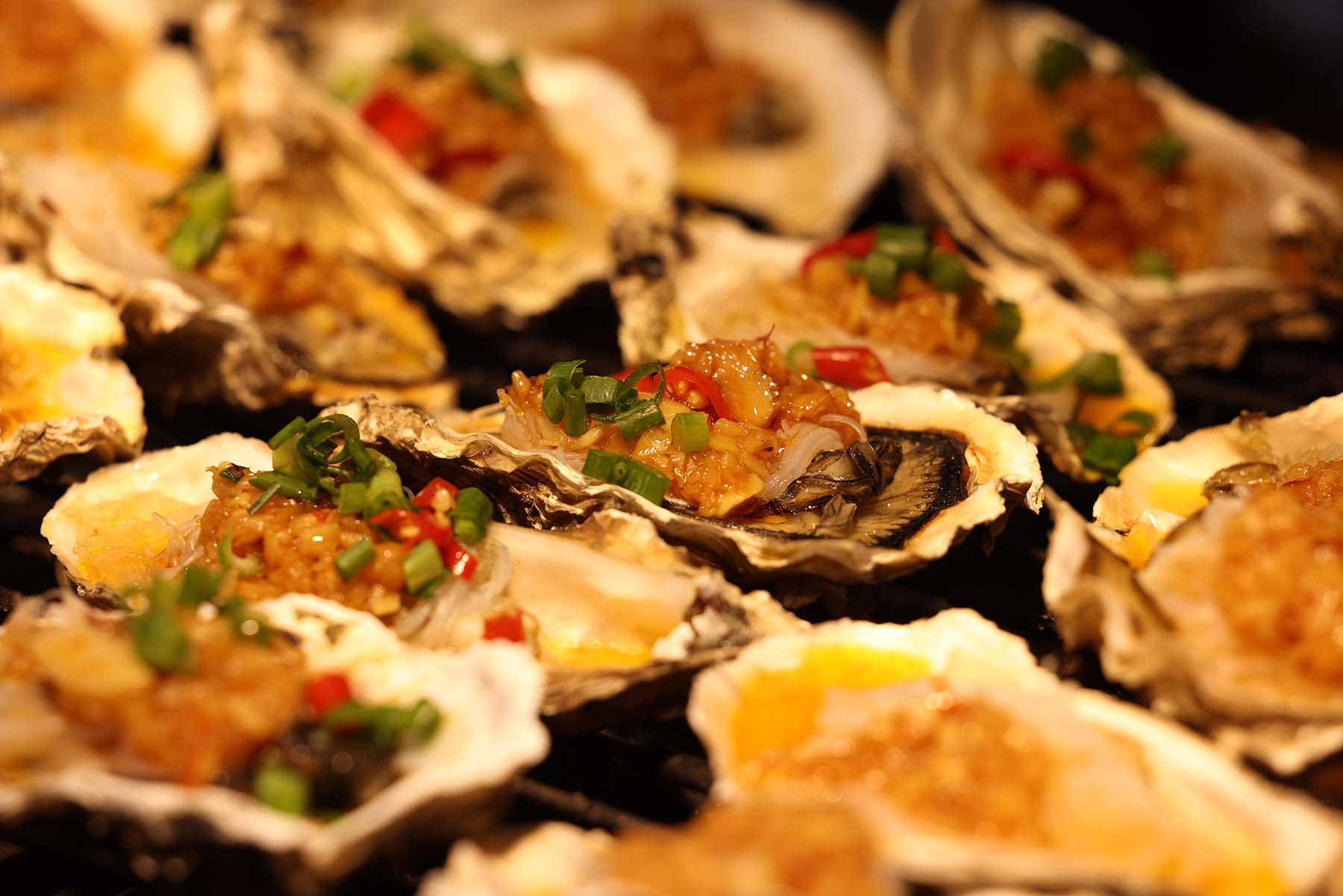
With 11 different fillings, his commitment to quality has paid off. "Quality comes first, and slowly but surely, the number of repeat customers is increasing," Zhao said.
His stall's success allowed him to buy two family apartments in Zhengding.
"I came with nothing," Zhao said, adding he is grateful for the opportunity the market provided, especially with the help and guidance from founder Li Zhangchao on fair stall rentals and running a food business.
Increasing numbers of visitors have further propelled Zhengding's overall tourism, which features night tours of ancient city walls and light shows near temples. The county's tourism has swelled in popularity in recent years after upgrades to its ancient sites and tourism spots.
Hotels near the market have reported 40 percent occupancy spikes, and taxi drivers' nightly earnings have doubled, Liu said.
"The night market and cultural tourism fuel each other," said Zhang Xiaofang, deputy director of Zhengding's culture and tourism bureau.
The county has leveraged its heritage, integrating the market with scenic night views, light shows, and night tours at scenic spots like Rongguo Mansion, Zhang said.
Free parking across the county and access to drinking water at key attractions have also boosted visitor satisfaction.
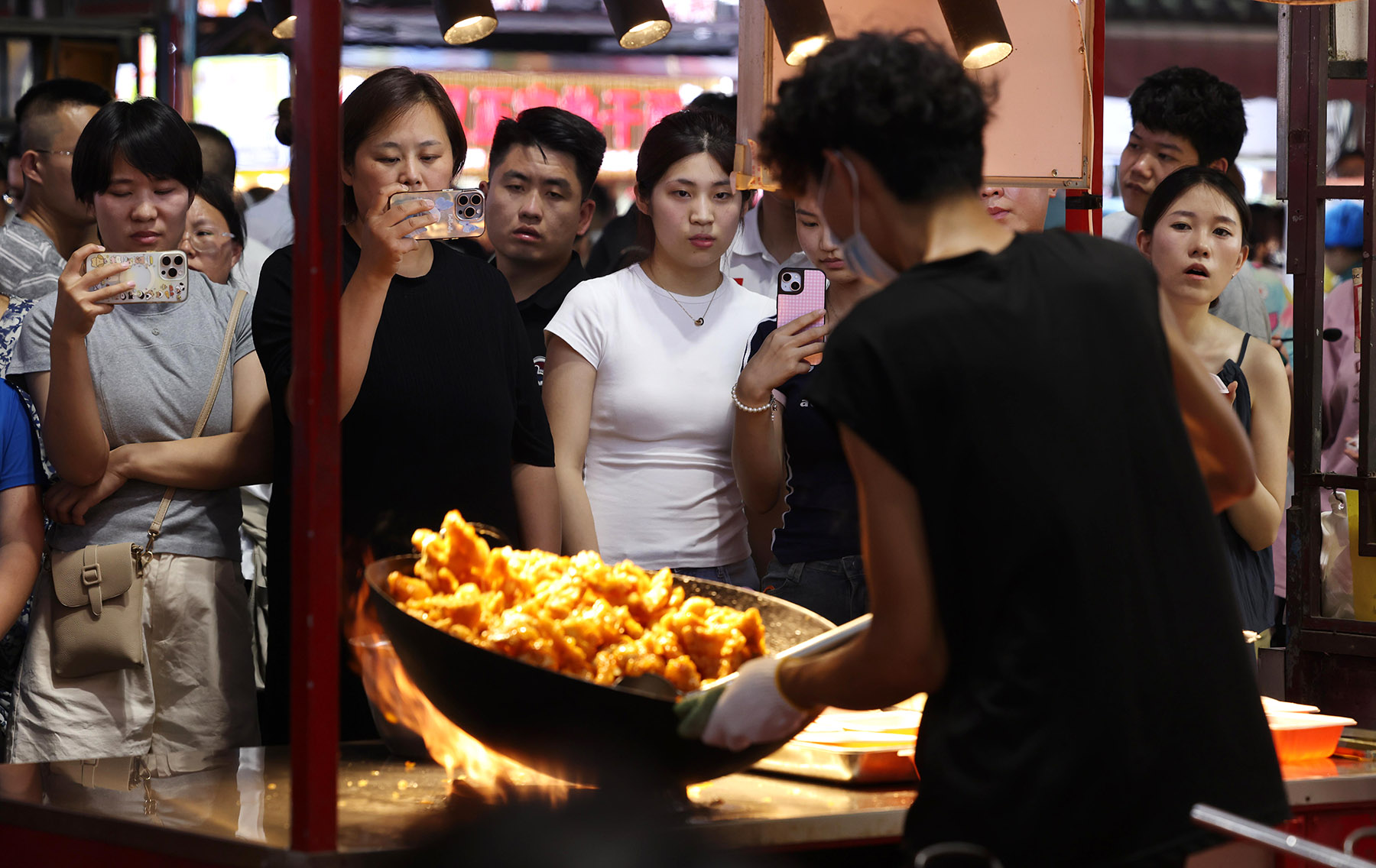
'Sleepless city' awakes
In another ancient capital, Kaifeng in Henan province, the legacy of a 1,000-year-old night market is being kept alive through an emphasis on immersive cultural heritage.
Kaifeng, also known as Dongjing, was the eastern capital during the Northern Song period.
A vivid description from the Song Dynasty chronicle Dongjing Meng Hua Lu — Eastern Capital: A Dream of Splendor — captures the nocturnal activities of the former imperial capital: "Night markets lasted until the third watch or midnight, and reopened as early as the fifth watch at around 3 to 5 am".
Today, Kaifeng has transformed this heritage into Dasongbuyecheng or the Great Song Dynasty Sleepless City, where a dazzling tapestry of history, culture and modern vitality intertwine after dark.
"Kaifeng's night markets are a living continuation of a thousand years of Song Dynasty charm," said Guo Juan, director of the Intangible Cultural Heritage Division at Kaifeng's Culture, Radio, Television, and Tourism Bureau.
"From the night bustle of the Northern Song era to today's night markets, they fundamentally reflect the Chinese yearning for vibrant nighttime cultural life," she said.
Kaifeng now boasts two national-level and eight provincial-level nighttime cultural tourism consumption clusters, as well as 12 scenic spots operating night tours, forming a rich "sleepless city" portfolio, Guo said. "People taste delicious food, and feel the depth of culture at the same time," she said.
Hui Dong, an associate professor of the School of History and Culture at Henan University, said Kaifeng's advantage lies in its deep-rooted night market cultural tradition.
"The night markets here have transcended the realm of pure dining, forming a multidimensional night economy ecosystem where diverse elements converge and integrate," Hui said.
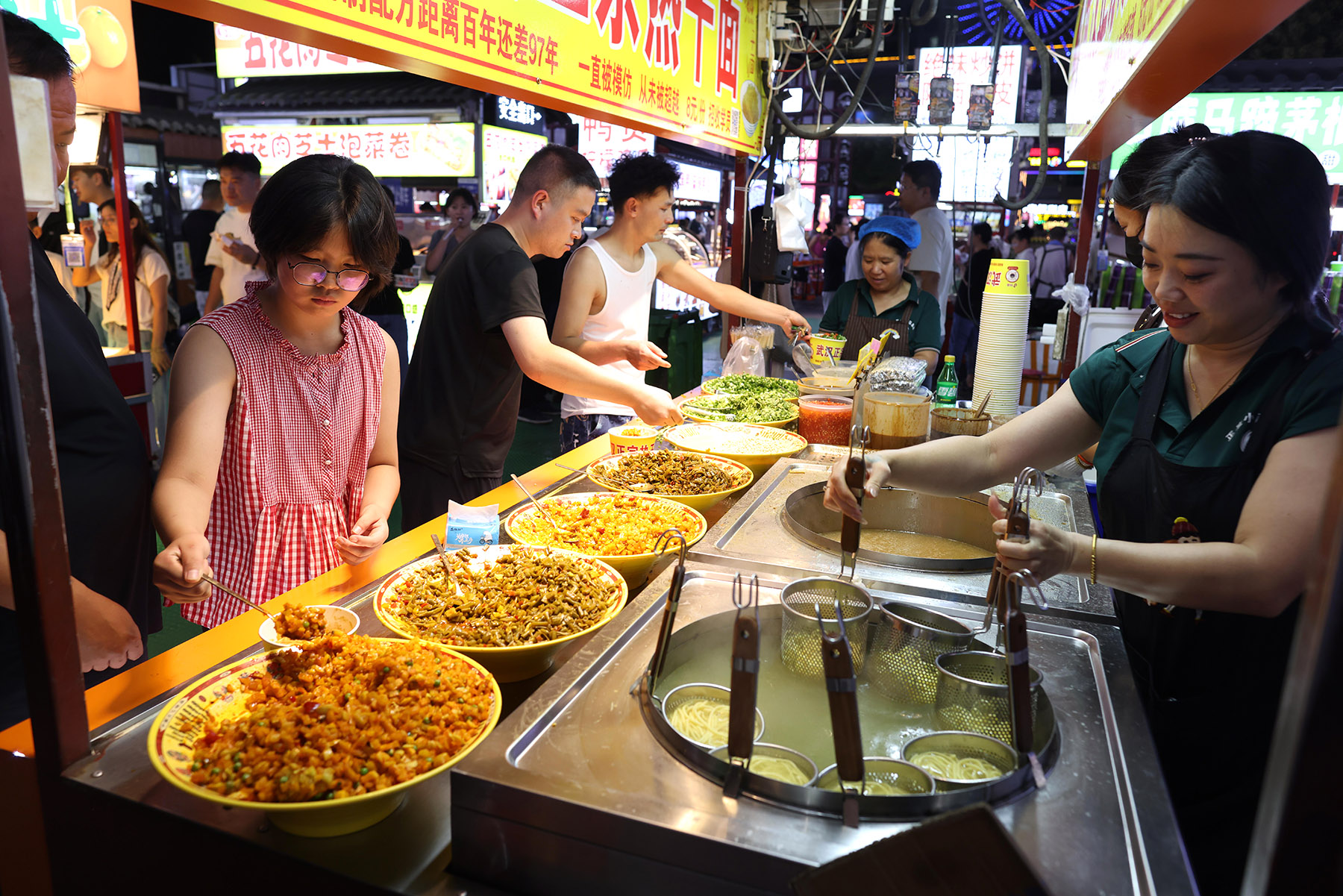
For Bai Jianchao, a 4th-generation inheritor of the intangible cultural heritage known as Bainian Baiji peanut cake craft, this revival is exciting.
"From our single-flavor handmade cakes in 1912 to today's cultural-creative product lines, it's been a century of integrating heritage and innovation," he said.
Young people dressed in hanfu, a traditional Chinese garment, at night markets, and parents teaching their children traditional crafts are evidence of a cultural resurgence, he said. "This is cultural confidence made tangible," he said.
Bai believes places like Zhengding, Kaifeng, and Zibo in Shandong province, which saw a barbecue craze in 2023, are linked by a common cultural thread.
ALSO READ: Destination from history to treasure
"From Zibo's BBQ craze to Kaifeng's continuing buzz and Zhengding's authentic vibe, it's about fulfilling a basic need for yanhuoqi for ordinary people," Bai said, adding it is more attractive than high-end consumption to most people.
He believes the ancient tradition of night markets is experiencing a vibrant renaissance.
"Each model, though distinct, powerfully demonstrates the enduring economic engine and cultural magnetism of yanhuoqi, or lantern-lit vibrancy," said Bai, adding the markets provide livelihoods for thousands, offer affordable enjoyment for millions, and serve as potent symbols of local identity and cultural confidence.
Contact the writers at zhangyu1@chinadaily.com.cn


